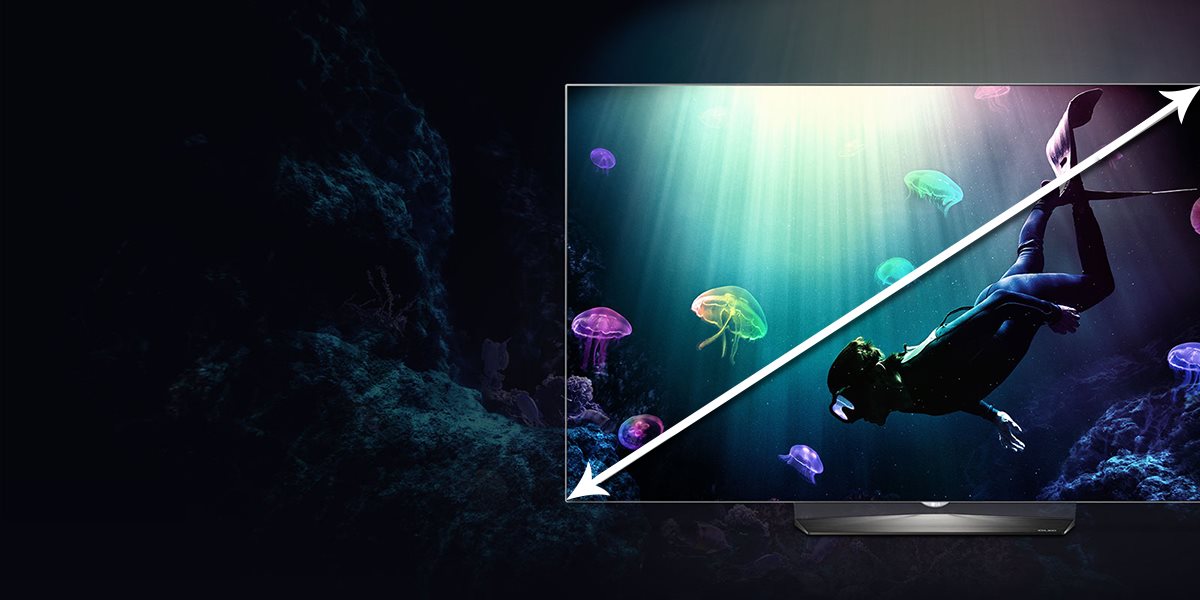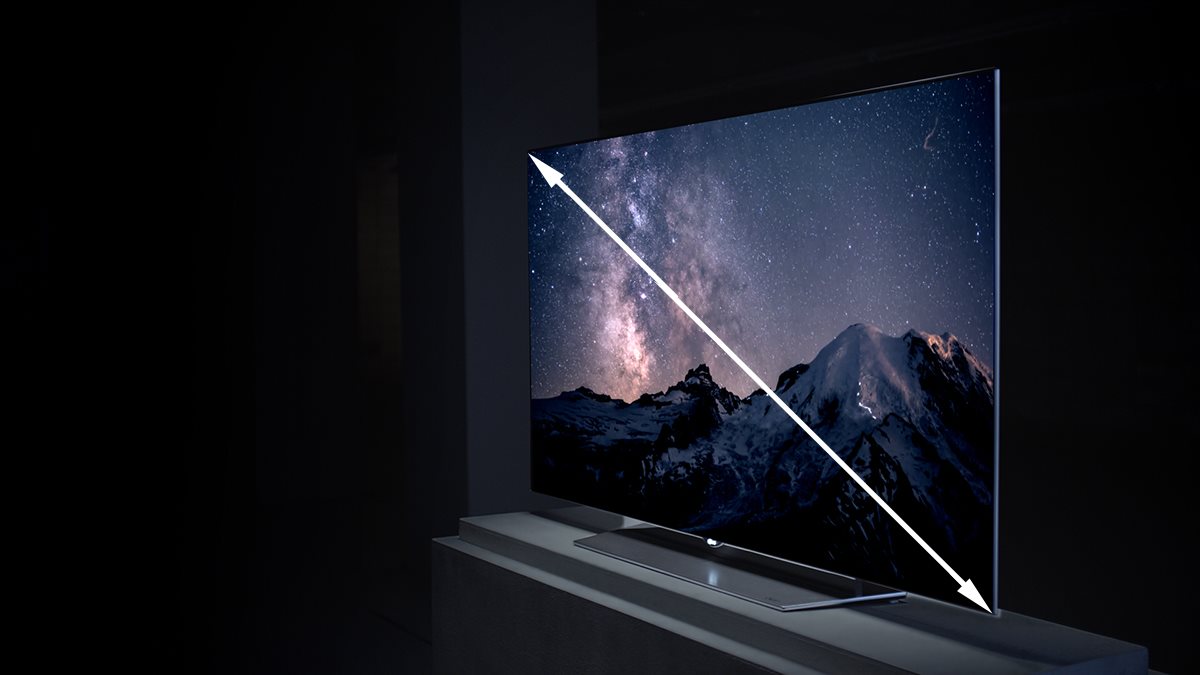

Screen Size
The diagonal is the distance between the two opposite corners of the screen, indicating the overall size of the display. It is usually written in inches (″) and does not include the variously wide screen bezels, so the final device size is usually slightly larger. The diagonal (and therefore the size) is given by the height and the width, two numbers that also indicate the aspect ratio. The diagonal is, therefore, a simplification that allows immediate comparison of screen sizes without lengthy calculations.

Diagonal - CONTENTS
Calculation of Diagonal
To calculate the diagonal, just use the well-known mathematical formula a² + b² and subtract the result. The diagonal of a TV set with a width of 100cm and a height of 60cm is therefore calculated as 100² + 60² = 10,000 + 3,600 = 13,600, which is, after subtraction, roughly 116cm. From the above, it is clear that the calculation is not very fast and in practice, not even that necessary.
Conversion of the Units
When choosing a new screen, you may have noticed that although the diagonal is one of the most basic parameters, it is given in both centimetres and inches. Unfortunately, some vendors only list the size in one unit of diagonal, so customers are sometimes forced to convert inches to centimetres and vice versa. Knowing that 1 inch is 2.54 cm, it is not a complicated calculation, but we recommend simply using our overview table.

What TV Size to Choose?
The bigger, the better rule does not always apply. For larger TVs, the recommended viewing distance is a little bigger, so the image in our field of view gets a little smaller. At the same time, the purchase price increases, as does power consumption (although panel type and other parameters also play a role). We cannot ignore the possible lower image fineness. Because if we have the same resolution (e.g. Full HD) on 80cm and 100cm TVs, then on a smaller screen the picture will be finer (in simple terms sharper). Some compensation is offered by the so-called upscaling, where some TVs can partially increase the resolution based on the calculation. At the same time, smaller TVs are often sufficient for some less common spaces, such as the kitchen, caravan or cottage.
However, owners of larger TVs would certainly not trade for smaller models. Once you get used to the larger size, the transition back to the smaller size is quite difficult. Larger televisions allow comfortable viewing at greater distances, so we can sit comfortably almost anywhere. Moreover, the larger image can be viewed conformably by multiple people without uncomfortable squinting or leaning to see more details.
i
Are you more interested in the display sizes of laptops, tablets and smartphones? Then we recommend reading this article.
Curved or Flat Screen?
The larger the diagonal (size) we choose, the greater the difference in the distance of the centre and edges of the screen will be to us. In other words, if we sit in front of the centre of the screen, the edges are further away from our eyes and we also look at them from a different angle. This can cause some distortion, where the image will appear different around the edges (for example, darker). This can be observed especially in some types of panels with poorer viewing angles. The overall distance also plays a role, so that curve is addressed more in computer monitors than in TVs. You can read more about curved screens here.
